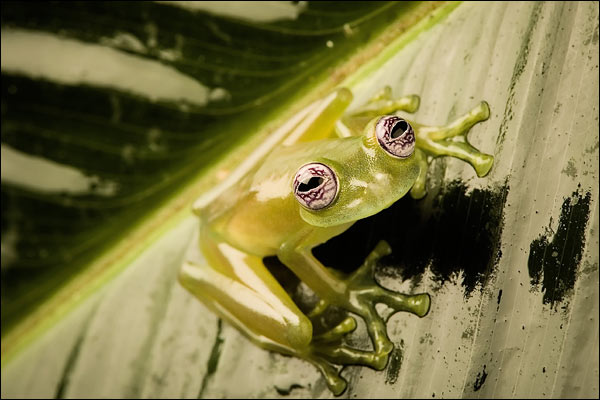
{wiki}
=Floating Frog=
{/wiki}
{slidyimport}
{ "title": "Slidy Demo",
"css" : "body: white;",
"copyright": "blah blah bah",
}
{/slidyimport}
{slidy}
=Hello=
Some text
*Bullet list
{/slidy}
{slidy}
=Second Slide=
Something else
{/slidy}
{/html}
{incremental}
*Some more bullets
*Another bullet
{/incremental}
{/html}
{/slidy}
{slidy}
=Resource Oriented Requests=
Supports ROC requests with {request} tag
*Simple request syntax
{html}
{request}res:/some/thing{/request}
{/html}
*Full [http://docs.netkernel.org/book/view/book:guide:logicalreference/doc:logicalreference:module:standard:logical:declarative:request:syntax|declarative request] syntax
{html}
{request}
<request>
<identifier>active:groovy</identifier>
<argument name="operator">res:/myscript.gy</argument>
</request>
{/request}
{/html}
Below is a dynamic inline groovy script showing the current time...
{request}
Here is a link back to the [#(2)|second slide]{/html} {/slidy} {slidy} =Images - SVG= Here is an external referenced SVG using the {svg} tag {svg}res:/res/slidy/demo/img/circles.svg{/svg} Example: {html}
{svg}res:/slidy/demo/img/circles.svg{/svg}
{/html}
Here is a literal inline SVG using the {svgliteral} tag
{svgliteral}
{/svgliteral}
{/slidy}
{slidy}
=Images - Bitmap=
Here is a bitmap using the {image} tag
{image}/wink/res/slidy/demo/img/glassfrog.jpg{/image}
Example:
{html}
{image}wink/res/slidy/demo/img/glassfrog.jpg{/image}
{/html}
{/slidy}
{slidy}
=POH - Plain Old HTML=
Use the {html} tag for plain old HTML
{html}
{/html}
Here's an example of how the {html} tag can be used to include the [http://vis.stanford.edu/protovis/|Protovis] Javascript Visualization Library...
{html}
 {/html}
{request}meta:demo:handout:note{/request}
{/notes}
{/slidy}
{slidy}
=Images - Bitmap Incremental Test=
Here is a bitmap using the {image} tag inside {incblock} (incremental revealed block content)
{incblock}
{image}/wink/res/slidy/demo/img/glassfrog.jpg{/image}
{/incblock}
{/slidy}
{slidy}
=Images - SVG Incremental Test=
Here is an external referenced SVG using the {svg} tag inside {incblock} (incremental revealed block content)
{incblock}
{svg}res:/res/slidy/demo/img/circles.svg{/svg}
{/incblock}
Here is a literal inline SVG using the {svgliteral} tag
{incblock}
{svgliteral}
{/svgliteral}
{/incblock}
{/slidy}
{slidy}
=Source Code Highlighting=
Use the {java} source code tag
{java}
//Actually Javascript but its source code...
var data = pv.range(0, 10, .1).map(function(x)
{
return {x: x, y: Math.sin(x) + Math.random() * .5 + 2};
}
);
{/java}
{/slidy}
{slidy}
=Layout Test - Double Column, Float Image=
Demonstrates the {wiki} tag which allows parsing of wiki embedded within HTML
{html}
{/html}
{request}meta:demo:handout:note{/request}
{/notes}
{/slidy}
{slidy}
=Images - Bitmap Incremental Test=
Here is a bitmap using the {image} tag inside {incblock} (incremental revealed block content)
{incblock}
{image}/wink/res/slidy/demo/img/glassfrog.jpg{/image}
{/incblock}
{/slidy}
{slidy}
=Images - SVG Incremental Test=
Here is an external referenced SVG using the {svg} tag inside {incblock} (incremental revealed block content)
{incblock}
{svg}res:/res/slidy/demo/img/circles.svg{/svg}
{/incblock}
Here is a literal inline SVG using the {svgliteral} tag
{incblock}
{svgliteral}
{/svgliteral}
{/incblock}
{/slidy}
{slidy}
=Source Code Highlighting=
Use the {java} source code tag
{java}
//Actually Javascript but its source code...
var data = pv.range(0, 10, .1).map(function(x)
{
return {x: x, y: Math.sin(x) + Math.random() * .5 + 2};
}
);
{/java}
{/slidy}
{slidy}
=Layout Test - Double Column, Float Image=
Demonstrates the {wiki} tag which allows parsing of wiki embedded within HTML
{html}
| {wiki} *Bullet Col 1 Item 1 *Bullet Col 1 Item 2 *Bullet Col 1 Item 3 {/wiki} | {wiki} *Bullet Col 2 Item 1 *Bullet Col 2 Item 2 *Bullet Col 2 Item 3 {/wiki} |

{slidyimport}
{ "title": "Your title here",
"css" : " body: white; //Any other css changes",
"copyright": "Your copyright statement here",
"cssref": "res:/some/referenced/css/resource.css"
}
{/slidyimport}
{/html}
*'''{slidy}''' defines a slidy slide - the contents are recursively evaluated as wink wiki text (may include further macro tags).
*'''{request}''' a ROC request (simple or declarative request syntax).
*'''{incremental}''' - mark list items for incremental reveal
*'''{incblock}''' - mark a block item (image, div, para etc) for incremental reveal.
{/slidy}
{slidy}
=Slidy Macros QuickRef - Content Macros=
*'''{notes}''' specifies notes that are only visible on handouts - press '''A''' to view
*'''{html}''' a block of plain HTML.
*'''{wiki}''' a parseable block of wiki inside a block html!
*'''{image}''' a bitmap image reference (must be externally visible to browser)
*'''{svg}''' an SVG image reference (may be an internal resource request)
*'''{svgliteral}''' an inline SVG image.
*'''{java}''' - content is rendered using source code highlighting.
*'''{xml}''' - content '''must''' be XML and is rendered using XML colour highlighting.
{/slidy}
{slidy+class@test}
=Background=
==Testing Testing==
* One
* Two
* Three
* Four
This slide has a background image and "Background Text" in the lower right corner.
{/slidy}
{slidy+class@inter}
=Interstitial Example=
This slide is supposed to be a smart interstitial!
''(Yeah I know the design sucks. But it proves the concept)''
{/slidy}
{slidy}
=After Interstitial=
All back to normal again.
{/slidy}
{slidy}
=Horizontal Center=
{centerh+width@75%}
 {/html}
{/centerh}
{centerh+width@20%}
{/html}
{/centerh}
{centerh+width@20%}
 {/html}
{/centerv}
{/centerh}
{/slidy}
{slidy}
=Horizontal + Vertical Center Wiki=
{centerh+width@200px}
{centerv}
{/html}
{/centerv}
{/centerh}
{/slidy}
{slidy}
=Horizontal + Vertical Center Wiki=
{centerh+width@200px}
{centerv}
 {/html}
|- class="postrow"
|POST
|{html}
{/html}
|- class="postrow"
|POST
|{html} {/html}
|-
|PUT
|{html}
{/html}
|-
|PUT
|{html} {/html}
|-
|DELETE
|{html}
{/html}
|-
|DELETE
|{html} {/html}
|}
{/wiki}
{/centerv}
{/centerh}
{/slidy}
{/html}
|}
{/wiki}
{/centerv}
{/centerh}
{/slidy}